- Administrator
- Albums and Singles
 I have been casually aware of Slomo since the murky, gnarled gloom of 2008's The Bog, but apparently not familiar enough to realize that each of their infrequent releases tends to unveil a significant evolution. As a result, I slept on this 2017 release, only belatedly realizing that it was one of the year's most woefully overlooked masterpieces. With Transits, Chris McGrail and Howard Marsden shed all traces of their doom-shrouded ambient sludge past to craft a transcendently lysergic tour de force of pulsing minimalist drone brilliance. I am always hesitant to throw around Coil as a comparison for any artist, yet I am legitimately hard-pressed to think of any closer kindred album than Time Machines, as Slomo achieve a similarly singular feat of reality-blurring slow-motion wizardry that feels far more like a ritual or invocation than a mere album.
I have been casually aware of Slomo since the murky, gnarled gloom of 2008's The Bog, but apparently not familiar enough to realize that each of their infrequent releases tends to unveil a significant evolution. As a result, I slept on this 2017 release, only belatedly realizing that it was one of the year's most woefully overlooked masterpieces. With Transits, Chris McGrail and Howard Marsden shed all traces of their doom-shrouded ambient sludge past to craft a transcendently lysergic tour de force of pulsing minimalist drone brilliance. I am always hesitant to throw around Coil as a comparison for any artist, yet I am legitimately hard-pressed to think of any closer kindred album than Time Machines, as Slomo achieve a similarly singular feat of reality-blurring slow-motion wizardry that feels far more like a ritual or invocation than a mere album.
Transits consists of three distinct 20-minute pieces, which highlights an interesting trend that has unfolded over the course of Slomo's four albums: after The Bog, they began distilling their art into increasingly more concentrated doses.For example, 2012's The Grain radically broke from Slomo's proud tradition of sprawling hour-long murk-fests by taking the shape of TWO songs, one of which clocked in at a mere 25-minutes.I suspect Transits marks the apotheosis of that crawl towards concision, however, as McGrail and Marsden seem to have finally hit the perfect window: 20-minutes is long enough to be mesmerizingly immersive, yet short enough to still have a coherent and effective dynamic arc.All three pieces share some clear compositional similarities, however, as all originated as guitar and synth improvisations, which naturally leads to a slow-burning aesthetic of loop-accumulation.While all are rooted in a single, endlessly repeated motif, each motif its own unique character.For example, the opening "Concerning The Explorers" feels sleek, futuristic, and glimmering, as a lilting guitar swell languorously pulses over a deep thrum.It definitely has an elegant, pure beauty, but it also provides a fine foundation for all of the subtly hallucinatory touches that gradually emerge from the piece's increasingly frayed edges.The duo exhibit an almost supernatural patience and lightness of touch, slowly pulling apart their pristine reverie until it ultimately sounds like a snarling insectoid buzz panning and undulating above a deep, subterranean rumble.
The album's arguable highpoint is the following "Super-Individual," which takes the futurist aesthetic of "Explorers" and steers it into more menacing and dystopian territory with a slow, heavy, dense, and relentless synth throb.As far as mechanized, inhuman dread goes, it is quite a tough act to beat, as it feels like a massive iron juggernaut mercilessly inching across a scorched landscape and leaving a shuddering wake of pulsing shockwaves behind.It is also quite a brilliant bit of psychedelia, as it is impossible not to get entranced by the deep, steady throb and the escalating undercurrent of gibbering electronics, flanging drones, and simmering chaos makes it quite a richly textured and immersive world to linger in.The closing "The Dialectic," on the other hand, feels considerably less like being exterminated by an immense, malevolent robot, taking shape as a dreamy and elusively quavering single chord.Weirdly, it kind of reminds me of Tuvan throat-singing, albeit transposed to synthesizers, as the wobbling thrum of the central theme constantly feels like it is splintering into a haze of ghostly overtones.Despite some occasional disruptions from gnarled and gurgling bass drones, it is a surprisingly beautiful piece that feels like a vast, billowing cloud illuminated by eerily flickering lights.It even builds to a very cool crescendo, as it gradually starts feeding back on itself and emitting some wonderful strangled electronic snarls.
If there is any real caveat with Transits, it is only that it is a very understated and slow-burning sort of masterpiece, so it took a few listens for me to appreciate the full depth and scope of Slomo's vision.It is definitely worth putting in the time, as this is a legitimately brilliant album that fills a void that few other artists come close to filling.I am frankly amazed that two separate humans can be so perfectly and intuitively on the same wonderfully otherworldly wavelength for the entire duration of an album.McGrail and Marsden somehow manage to do absolutely everything right with Transits, taking drone into an alternately sublime, ritualistic, and heavy deep-trance state and distilling that to its absolute essence: there is no clutter here, no wasted notes, no false steps, and no lulls.Transits is three perfect doses of simmering, immersive drone nirvana.This album feels post-human in the best way possible, like some kind of cryptic transmission from the future ruins of earth in which everyone has dissolved into beams of pure light and energy or something.This is an instant classic.
 
Read More
- Administrator
- Albums and Singles

Félicia Atkinson is a composer, sculptor, painter, poet, and publisher from Rennes, France. Atkinson has led a fruitfully fantastic run of eerily blissful, serenely euphoric sounds. Whether under her own name or via her defunct recording pseudonym Je Suis Le Petit Chevalier, Atkinson has released work on Umor Rex, Digitalis Limited, Aguirre, and Shelter Press, an imprint co-run with Bartolomé Sanson.
Coyotes is an EP inspired by Atkinson's last voyage to New Mexico in February 2017, when she visited and took in the geographic landscapes from Taos to Ghost Ranch. The same vistas also inspired much of Agnes Martin's and Georgia O’Keefe's painting, as well as Jerome Rothenberg's poetry and translation’s works.
Atkinson describes a Coyotes as a "Carnet de Voyage," a tape you could directly play in your car while traveling somewhere, a kind of imaginary map to a sentimental journey. A spontaneous gesture, close to the notion of gift or offering. Or, simply, a postcard to a friend. But it's also a praise to the conservation of national and state parks and its human and non-human souls, menaced as we know now by drilling and violent economic speculations.
Here, coyotes act as a kind of metaphor of ambiguity and doubt, a state of mind that Atkinson find interesting to transcribe musically; the ambiguity furthered by Atkinson as a literal "foreigner" in New Mexico. She conveys a sense of visiting these native sacred lands and wondering what you are doing there.
Musically, Coyotes is composed of two long tracks, "Abiqiu" and "Lighter Than Aluminium." Each track features an effervescent froth of piano, MIDI sounds evokes marimbas, Fender Rhodes, bells, sub-basses, and spoken-word poetry written by the musician to display a melancholic landscape made of transparent but deep layers of pale colors and blurry lines.
More information can be found here.
Read More
- Administrator
- Albums and Singles
 It was quite a pleasant surprise to discover that latest Hawthonn album was getting a physical release in the US, as few things scream "zero commercial potential" quite like Phil and Layla Legard’s quasi-pagan and psychogeography-inspired drone-folk reveries. While characteristically arcane and anachronistic to its core, Red Goddess actually drew its initial inspiration from relatively current culture, as the Legards were (rightly) fascinated by the primal themes of Lars von Trier's Antichrist. From there, however, Red Goddess evolved into something far more mysterious and temporally ambiguous, abstractly exploring the symbolic role of mugwort in folklore and tradition ("an herb associated with dreaming, travel and menstruation, mugwort particularly favors edgelands: those abandoned, untended places, part man-made, part rural, where nature begins to reclaim what humanity has left behind").
It was quite a pleasant surprise to discover that latest Hawthonn album was getting a physical release in the US, as few things scream "zero commercial potential" quite like Phil and Layla Legard’s quasi-pagan and psychogeography-inspired drone-folk reveries. While characteristically arcane and anachronistic to its core, Red Goddess actually drew its initial inspiration from relatively current culture, as the Legards were (rightly) fascinated by the primal themes of Lars von Trier's Antichrist. From there, however, Red Goddess evolved into something far more mysterious and temporally ambiguous, abstractly exploring the symbolic role of mugwort in folklore and tradition ("an herb associated with dreaming, travel and menstruation, mugwort particularly favors edgelands: those abandoned, untended places, part man-made, part rural, where nature begins to reclaim what humanity has left behind").
As befits a duo with such an esoteric and thoughtful conceptual approach, the Legards have a truly unusual, purist, and radical approach to composition: Hawthonn pieces generally take root in field recordings from a specific, meaningful place and the music blossoms forth from there.In the early stages of Red Goddess, for example, the Legards were attempting to track down field recordings made in the Black Forest (where parts of Antichrist was filmed, also a place described by Tacitus as an "inhospitable, impassable pagan kingdom").I am not sure if they ever found what they sought, but each of Red Goddess's five pieces have evocative natural sounds at their core, ranging from windswept plains to forest sounds to the gently burbling sounds of a stream. Plenty of other artists use field recordings for texture and do it well, but Hawthonn seem to use them as a subconscious guiding force instead, as Phil has long been intrigued by Jhonn Balance’s ideas about remote viewing, "psychic landscapes," and "imaginistic" travel.In practical terms, that means that a piece's shape is roughly dictated by the landscape that it is rooted in: a piece woven from field recordings of a cave will be very different from a piece birthed from a meadow in the springtime.That approach gives Red Goddess quite an unusualand sometimes challenging structure and arc, as pieces range from 3 minutes to 15 minutes and alternately resemble an ancient pagan ceremony; a seance, a vivid nightmare, or a funereal dirge.Fortunately, the latter is relegated to just one piece, the comparatively brief and goth-tinged instrumental "Misandrist."The rest of the album is devoted more to Hawthonn's strengths, which usually take the shape of Layla's mantric vocal improvisations over a hallucinatory and shifting bed of drones.At their best, Hawthonn sound like temporally dislocated druids recording cryptic hymnals to the earth's less traveled places.
The album's strongest piece is arguably the opening "In Mighty Revelation," which deceptively begins with a howling, rumbling roar before unexpectedly transforming into a very different piece around the 2-minute mark.Naturally, I am somewhat perplexed by the piece's slow start, but it is quite a stunningly unusual and transcendent achievement once it takes shape, evolving from an eerie backdrop of thighbone trumpet howls and deep exhalations to a majestic and swooningly lovely vocal piece.Layla makes especially fine use of hypnotic repetition, endlessly invoking the title phrase while addition layers of her vocals harmonize and swoop dreamily over Phil's shivering string swells.The other bookend ("Dream Fugue") is similarly quite memorable, steadily building into a deeply lysergic and blearily undulating collage from some rather innocent-sounding recordings of birds cavorting around the water.Though Layla does not sing at all in it, "Dream Fugue" is an especially strong example of Hawthonn's singular alchemy, as the quavering, impressionist drones; snarling strings; and languorous flute melodies weave perfectly into the field recordings to evoke an otherworldly and haunted landscape.The other two pieces are not necessarily weaker, yet they do tend to break the fragile, unreal reverie that typifies Hawthonn's better (and more understated) work."Lady of the Flood," for example, initially sounds disconcertingly like the night sounds of a darkly enchanted forest, then transforms into a bleakly angelic vocal interlude before erupting into a distorted and doom-influenced crescendo.The following "Eden" then inverts the formula, opening as a dark and brooding bit of wailing, goth-tinged psych-rock before building into a wonderfully feral outro of wildly processed and chopped string howls.
The one real caveat with both Red Goddess and Hawthonn in general is that the Legards have a fairly chameleonic, hard-to-categorize, and sometimes challenging aesthetic.And they follow their muse in some directions that sometimes seem counterintuitive or self-defeating.The other side of that approach, however, is that Phil and Layla's music often has a refreshingly organic and unhurried flow.When it works, their artistry sounds natural, vibrant, and spontaneous, while it errs on the side of under-edited when it does not.As such, I tend to run hot and cold on Hawthonn's oeuvre, but they are always headed in an intriguing and unique direction, even when some of their experiments are not quite triumphs.In any case, Red Goddess will probably win them a healthy amount of new fans, as it is a comparatively high-profile release that features some comparatively accessible work that falls within shouting distance of the doom zeitgeist (without being at all derivative).For me, however, Red Goddess is significant primarily for adding two new pieces ("A Mighty Revelation" and "Dream Fugue") to the small but growing body of Hawthonn's intermittent flashes of outsider near-brilliance.That is enough to make me like this album quite a bit: the Legards are not infallible, but they have a singular and ambitious vision that is wonderful to behold when it hits the mark.
Samples:
 
Read More
- Administrator
- Albums and Singles

Recital is joyed to publish the newest record by Canadian composer Sarah Davachi. Currently working on her PhD in Musicology at UCLA, her trajectory has been unorthodox. Hailing from Calgary, Alberta, which, if you’ve never been there, doesn’t really scream “Avant-Garde” (Calgary is the rodeo capital of the world). From a young age, Sarah was a driven pianist (and figure-skater, although that's a story for a different time). It is important and interesting that she chose to study esoteric music; as Sarah could have easily been a cowgirl or a concert pianist had her ingrained love of synthesis and sonic phenomenology not taken the wheel.
Sarah is a considered person. I find few people that have the diligence and resolve to take their time with music… especially in a live context. I respect that about her. The first time I saw Sarah perform, I presumptuously told her that her music reminded me of my favorite Mirror albums (the exceptional project of Andrew Chalk and Christoph Heemann). Sarah was not familiar with Mirror, so the compliment was initially lost on her. Years back I was in the same situation when a review compared my music to Andrew Chalk, who was unknown to me at the time. So I felt a kinship in our magnetic drift towards unspoken and clustered beauty.
Let Night Come On Bells End The Day follows the release of her "sound-wheel" LP All My Circles Run, which examines the isolation of different instruments. Let Night Come On…, recorded mainly with a Mellotron and electronic organ, feels like a return to the nest. Burrowed in the studio, Davachi was the only performer on this album. She both splays her compositional architecture and re-contextualizes the essence of her early output. She chiseled careful and shadowed hymns; anchors of emotion.
Two pillars of this album are "Mordents," which to my ears drops hints of her love for Progressive rock music – and "Buhrstone," comparable to a sombre funeral march of piano and flutes. These two examine punctuations of early music, gently plucking melodies and movements. The three other compositions are tonal works, blowing slow jets of lapping harmonics.
Writing this description now, I find it hard to separate "At Hand" from filmmaker Paul Clipson, who made a melancholic film for this piece of Sarah’s. A fitting title for Sarah and Paul’s relationship – frequently working in orbit of each other, meticulous and tactile. I cherish this track as a memory of Paul.
This is a lovely album to fill an evening living room with. A blanket, a cup of wine, a dim bulb, a wide window.
More information can be found here.
Read More
- Administrator
- Albums and Singles
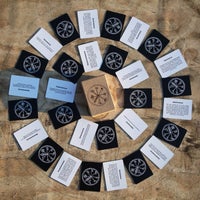
The Art of Magic presents a deck of 31 Oracle mantic cards adapted from the original Cecil Williamson divination index archive found within the library at the Museum of Witchcraft and Magic, Boscastle.
The accompanying cassette is intended to aid practice and was recorded on location at the Museum of Witchcraft and Magic using ritual instruments and objects from the storeroom archive collection.
This collection of cards has been created with the purpose of providing instruction, insight and inspiration for anyone interested in exploring the natural phenomena of ‘the mantic arts’. They are intended to be used however one wishes to aid practice and gain further insight.
It is all a question of moving the self into a deeper consciousness, a totality of awareness....’
"The history of divination can be traced back at least as far as the classical period (though no doubt reaches further) in which ‘Augury’ (a sign of what will happen in the future) was employed to discern the will of the odd; this usually took the form of the observation and subsequent interpretation of natural phenomena. One could say this is cognate with the modern Jungian concept of Synchronicity. Various re nements and elaborations to this principle have developed through the ages, though generally speaking they all employ the same principle, that is to say, the observation of some kind of random form which may be contemplated in such a way as to bypass the conscious mind, and thus access our inner world which in turn has access to the information required. The method by which this is achieved is entirely determined by the culture, the environment, the resources available and the nature of the prevailing belief system in which the system of divination operates."
-Steve Patterson, Cecil Williamson’s Book of Witchcraft, Troy Books, 2014
More information can be found here.
Read More
- Administrator
- Albums and Singles
Flesh soon yields, but stone is greater; the works of man survive the maker,
Yet, given time, new flesh brings breath; and fastens song to stone’s unrest.
Stone ruins prick the Devon map like starlight in the night sky. Each one reaches us as a distorted image of a bygone age: a past-pulse, rippling out through time to meet us in the present, beaten and ragged from a long journey.
Devon Folklore Tapes marks its seventh iteration with sound-investigations into two such time-travellers: Frithelstock Priory and Okehampton Castle. The former was once the home of an Augustinian fraternity, but since its dissolution in 1536 has continued to shelter monks of the spectral kind in its slow decay. The latter is a Norman motte and bailey castle, situated in a leafy valley on the edge of Dartmoor, where a revenant spirit wanders the byways in her carriage of bones.
The movements featured on this cassette tune in to these tales and others, informed by fieldwork and automatic improvisations conducted on location in 2017. The cassette comes housed in a hand-stamped and numbered presentation box including an inlay booklet detailing the folklore of each site.
The works were executed by R.D. Kirdiv and S.V. Skirling – two longstanding members of the Folklore Tapes ensemble who, with this release, are finally stepping out from the shadows and into the ferric.
More information can be found here.
Read More
- Administrator
- Albums and Singles
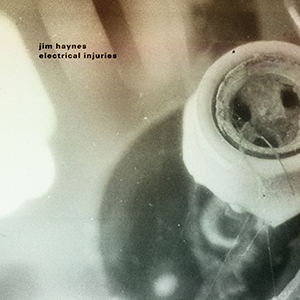 While I doubt I would ever use the term "peaceful" to describe Jim Haynes' prolific solo output, this newest record makes his previous work seem just that. Electrical Injuries may not be far removed from his body of work sonically, but there is a different edge, a malignance to it, and one that is not so subtly referenced in the album’s title. With literal and metaphorical references to the unpleasant nature of electricity, this is perhaps his most harsh work to date, but one that clearly bears his signature brand of audio decay.
While I doubt I would ever use the term "peaceful" to describe Jim Haynes' prolific solo output, this newest record makes his previous work seem just that. Electrical Injuries may not be far removed from his body of work sonically, but there is a different edge, a malignance to it, and one that is not so subtly referenced in the album’s title. With literal and metaphorical references to the unpleasant nature of electricity, this is perhaps his most harsh work to date, but one that clearly bears his signature brand of audio decay.
Haynes’ work has always fit into the nebulous area of sound art:not quite music, but not pure noise either.This one leans a bit more into the latter, however.The instantaneous squealing electronics that open "Falling Through Ice" makes this tactic abundantly clear.Over an undulating, churning loop of electronics he casts out big, massive crashes of harsh distortion, as brutal or aggressive as anything from a Merzbow record.However, what sets it apart is that sense of complexity, his use of textural rotting sounds that are almost tactile in their depth.The dissonance relents a bit, revealing his trademark processed crunch and ghostly electronics rising from within.
For as forceful and chaotic as Electrical Injuries can be at times, it never comes across as anything less than carefully composed and deliberately structured.Crunching loops make up the framework of "Choked on Brine," with some scraping and an almost guitar-like squall emanating from below.The structure and looped repetition gives the piece an obtusely musical quality: as the sounds rise and fall he carefully changes and adapts what is there, making for a diverse and multifaceted sounding composition.The painful buzz that aggressively opens "Operator" is befitting the record's title, as shortwave radio static is brought in, melded together into some sort of pseudo burbling electronic rhythm. The piece never becomes overly abrasive, but the sustained electrical hum that stays active is disquieting to say the least.The unpleasant electricity continues into "Acerbic, Convulsive", as strange tones drift in and out.Howling, shrill electronic moans are added in, increasing discomfort but also the wide variation of sound within the piece.
The lengthy conclusion to the album, "Autosuggestion", is perhaps its most calming moment, and that is speaking only in relative terms.Haynes again maintainssustained buzz, pulsating between loud and soft, but as a whole there is a slower, more pensive flow to the piece.Additionally, his employment of less distorted synth-like electronic noises is a more pleasant addition compared to the rest of the record.The sound builds to a nice crunch, with some additionally shrill noises added, before ending the album on a sputtering engine.
Although some of the song titles on Electrical Injuries would not be out of place on a grindcore album, Jim Haynes conjures the violent and the disturbing not via trite imagery or provocative, but from his sounds alone.The album is consistent with his fascination with decay (visually and audibly), but the greater sense of maliciousness pervades the record gives it a distinctly different feel than his other works.This stems largely from the brash, noise-laden edge to most of these six compositions, but also a general sense of the sinister that pervades it from beginning to end.The end product makes for a fascinating record that is quite often discomforting, but in the most enjoyable of ways.
samples:
 
Read More
- Administrator
- Albums and Singles
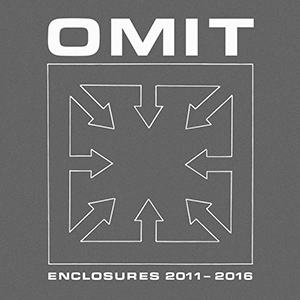 New Zealander Clinton Williams has been operating as Omit since the late 1980s, but his hermetic approach to electronic music has kept him largely on the periphery of any related musical scene. His early works were handmade tapes and, once the technology became available, CD-Rs created on his own label, with his own artwork, and produced by none other but himself. His insular approach to his art meant work was only known to a handful (I myself had heard the name, but none of the music prior to this review) until this new box set joint released by Lasse Marhaug's Pica Disk and NZ based End of the Alphabet Records. Not intended to be a career overview, it instead is a compilation of five self-released CD-Rs from 2011 through 2016, packaged with a lavish booklet that only sees the surface of Williams’ unique brilliance.
New Zealander Clinton Williams has been operating as Omit since the late 1980s, but his hermetic approach to electronic music has kept him largely on the periphery of any related musical scene. His early works were handmade tapes and, once the technology became available, CD-Rs created on his own label, with his own artwork, and produced by none other but himself. His insular approach to his art meant work was only known to a handful (I myself had heard the name, but none of the music prior to this review) until this new box set joint released by Lasse Marhaug's Pica Disk and NZ based End of the Alphabet Records. Not intended to be a career overview, it instead is a compilation of five self-released CD-Rs from 2011 through 2016, packaged with a lavish booklet that only sees the surface of Williams’ unique brilliance.
It only takes a cursory overview of the box and the discs to get the feel that Omit is clearly Williams' own personal obsession.Besides the insightful, in-depth essay by the Dead C's Bruce Russell, much of the original artwork from these releases is presented:intricately detailed pseudo-schematics of sound systems and speaker arrays, along with almost obsessively documented tracking sheets of the equipment used on various compositions within this set.
This documentation is illuminating, because a quick listen would insinuate that Williams' work is either the product of a NASA control room array of modular synthesizer equipment or genius level Max/MSP processing.Instead, it is revealed that most of the sound is from standard keyboard gear:the Pro-One and DX7 especially figure heavily into the documentation, as does a wide variety of effects units.However, the expanses of pure, electronic sounds and idiosyncratic rhythms seem unlikely to come from such mundane equipment.
That, however, is clearly indicative of Clinton Williams’ skill and deftness as a composer and performer.Right from set opener "Turner" from Transistor Rhythms this is clear:a lush, but minimal expanse of synth is cast out and, over the span of the next 20 minutes he blends in the perfect minimal electronic beat, with a great deal of variation, and dynamic, growing layers of sound added and subtracted.Bits of voice seem to penetrate through here and there, but the emphasis is obviously on the synthetic."Construction (Front-End System Loader)" from Proportions of the Skull is similar, with the addition of oddly processed hand clap like rhythms and a warbling bass line that congeals into a bizarre take on electro.
The use of rhythms (I am hesitant to say drum programming) is one of the most enthralling parts of Omit's work.In some cases they are almost conventional:the tiny, fragile clicks of "Mind Borrow" from Proportions are reminiscent of the short-lived glitch scene, and the almost-techno feel is enhanced by the addition of some 303-like passages later on.Echo Dot's "Echo Dot FrameWork:One (Repeat Frame)" is a brilliant juxtaposition of a minuscule rhythmic sound joined with a massive, chaotic industrial din behind, all treated with carefully measured dubby echo and feedback.
Williams' use of field recordings and found sounds is another extremely impressive and idiosyncratically wonderful facet of these recordings."Skull Lander (Enter the Compound)" is mostly a minimalist click and vocoder fest, but also with an added beep of the grocery checkout line to set the unlikely stage."Diffuser" opens with what can only be the sounds of an empty plastic bottle, later mixed with scraping metal and analog beats.Finally, Endclosure's "Enclosures Four" is a combination of heavy beats and skittering rhythms, with eventually a few layers of the mix devoted to the rustling a potato chip bag (which is confirmed by the tracking guide in the booklet).
The term outsider artist is usually a backhanded complement at best, and pejorative at worst, but I think it is fitting for Clinton Williams' Omit in the most positive of ways.Outsider in the sense that the music contained on these discs sounds like no attempt to fit into a scene or genre, or to adhere to any norms or expectations.Nor does it seem clearly influenced by any other artist or style in particular.Instead, it is clearly the manifestation of one man's obsession, something that may be odd or occasionally strange to us listening from the outside, but makes perfect sense to Williams.Whatever intrinsic motivations he is working from to create this music may be a mystery to anyone but him, but there are many of us in the world who can love and appreciate this work.The clarity and purity of sound and the almost tangible depth of the sounds and processing makes this an essential collection from this unique and sadly under recognized genius.
samples:
 
Read More
- Administrator
- Albums and Singles
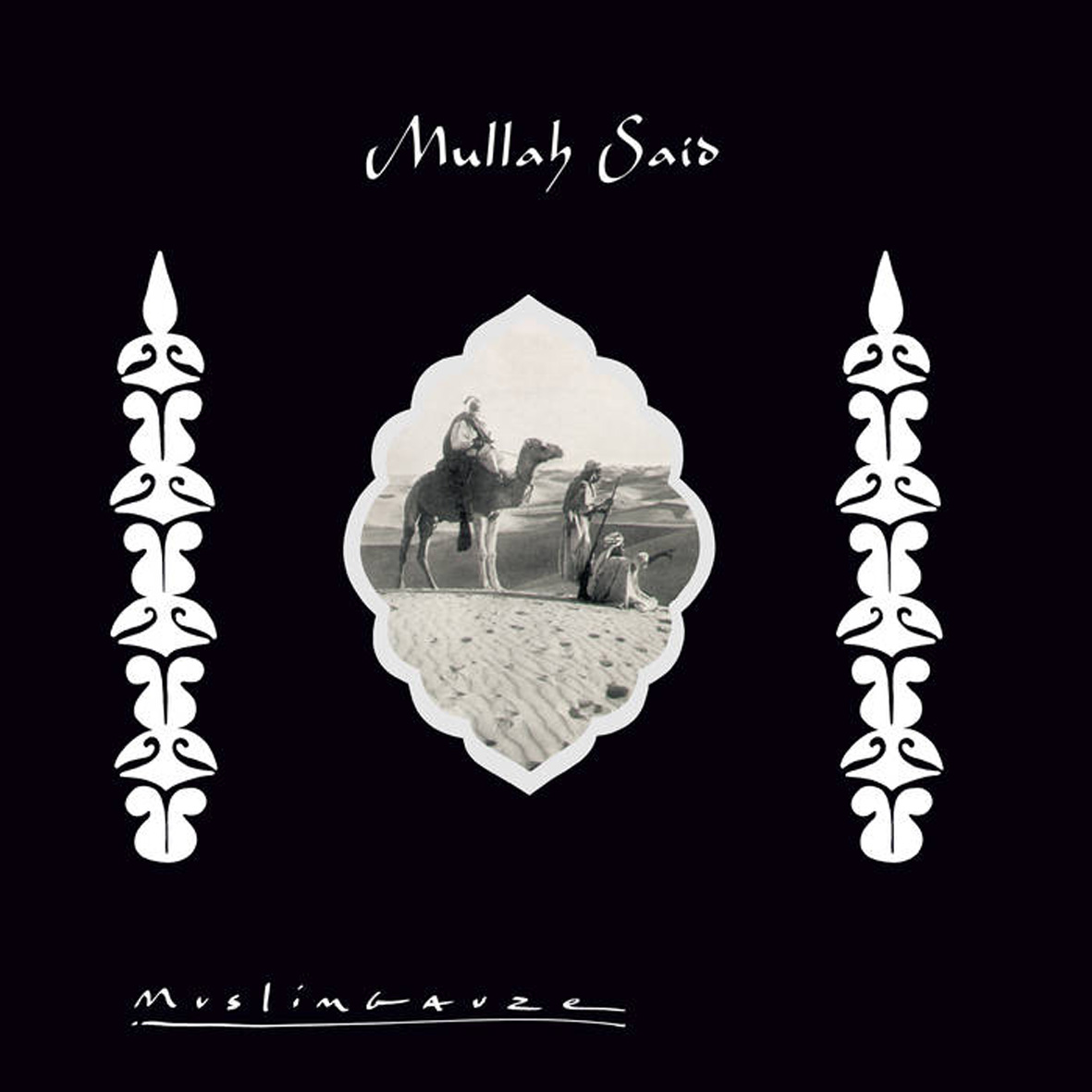 Earlier this year, Staalplaat took a break from their plunge into Bryn Jones' seemingly endless archive of unreleased/hyper-limited material to put out a double-LP vinyl reissue of this beloved landmark album from 1998. While the vinyl format is an odd choice for this particular release (I have the digital version), I am delighted by this new reissue campaign: the sprawling Muslimgauze discography is a hopelessly intimidating and overwhelming labyrinth for all but the most die-hard fans, so the world definitely needs a knowledgeable curator to call attention to the most timeless and essential releases in the Muslimgauze canon. This is one of those. Normally, my own favorite Muslimgauze albums tend to be the more ethno-percussion-driven ones, but Mullah Said's heady drone/dub-inspired collage aesthetic is a striking exception, as it stands as one of Jones' most immersive, evocative, and fully formed works.
Earlier this year, Staalplaat took a break from their plunge into Bryn Jones' seemingly endless archive of unreleased/hyper-limited material to put out a double-LP vinyl reissue of this beloved landmark album from 1998. While the vinyl format is an odd choice for this particular release (I have the digital version), I am delighted by this new reissue campaign: the sprawling Muslimgauze discography is a hopelessly intimidating and overwhelming labyrinth for all but the most die-hard fans, so the world definitely needs a knowledgeable curator to call attention to the most timeless and essential releases in the Muslimgauze canon. This is one of those. Normally, my own favorite Muslimgauze albums tend to be the more ethno-percussion-driven ones, but Mullah Said's heady drone/dub-inspired collage aesthetic is a striking exception, as it stands as one of Jones' most immersive, evocative, and fully formed works.
One thread that runs endlessly through the Muslimgauze discography is Bryn Jones' obsessive recycling and self-cannibalization, as the same motifs appear again and again and many of his better ideas resulted in multiple variations of the same song.That curious approach arguably reached its apotheosis with this album, as two of its lengthiest songs ("Every Grain of Palestinian Sand" and "Muslims Die India") appear twice, accounting for roughly 18 minutes of a 65-minute album…and those two pieces can only be differentiated by their subtly different bass patterns and shifts in pace.And the opening "Mullah Said" does not sound much different either.It is unusual sequencing, to be sure, but it does not feel redundant, lazy, or one-dimensional.Rather, Mullah Said feels like a single, massive, trance-inducing epic with relatively irrelevant differentiations between its various movements.As such, the vinyl format fundamentally disrupts Mullah Said's raison d’etre: the mesmerizing cumulative power of the album's enveloping, hallucinatory repetition.I imagine it is quite hard to remain beguiled by Mullah Said's exotic and unworldly spell when you have to flip a record three times to get to the end, though I suppose roughly the same effect could be achieved by just playing the same side of the album four times in a row.That is not a negative statement about the music itself, mind you–just an observation that Mullah does not have a dramatic arc that gradually unfolds: it is more like a swirling and mysterious aural hallucination to live inside.Concepts like "beginning" and "end" do not hold much meaning here.That said, people love vinyl, so I cannot fault Staalplaat for their choice: a deluxe vinyl reissue is an event that generates excitement–a reissued CD is not.
In essence, Mullah Said is built upon an understated (yet perfect) infinite groove of brooding bass tones and shifting electronic drum patterns.Aside from the tensely relentless kick drum pulse in the first "Every Grain of Palestinian Sand," Jones tends to maintain a languorously lurching dub-like pulse, which provides an optimally spacious canvas for all of the other dub-like flourishes (drifting voices, echoing percussion, etc.).There are occasional loops of sitar/tambura melodies and some wonderfully menacing swells of buzzing string drones that serve as recurring motifs to give the album a sense of structure, yet the true beauty of Mullah Said lies in everything on the periphery: this album is a vibrant, multilayered, and complex tour de force of clattering hand percussion, evocative field recordings, and enigmatic snatches of dialogue.In the past, I have critiqued Muslimgauze for Jones' exasperating tendency to endlessly move on to the next project without lingering around to fully flesh out his best ideas and Mullah Said is an unexpectedly dramatic swing in the opposite direction: it is basically just a simple bassline and sinister-sounding sitar buzz painstakingly expanded into an incredibly rich and detailed fantasia.It feels like I was dropped inside a nightmare set in an unknown Middle Eastern city and all I know is that something extremely significant just happened, but trying to piece together exactly what proves to be incredibly elusive.I am completely enveloped in an unnerving chaos of gunshots, lamentations, prayers, radio transmissions, shouting men, speeding trucks, conspiratorial-sounding conversations, and a host of unrecognizable and unfamiliar other sounds.Sometimes it feels like I am just wandering through a marketplace and other times it feels like I just stumbled into the aftermath of a massacre, which is a very neat trick indeed: Mullah is built on constantly shifting sands and its unstoppable forward motion makes it impossible to ever fully get my bearings.Despite that seemingly amorphous structure, however, Jones maintains a deliciously constant balancing act of tension and release, as these pieces regularly blossom into small-scale crescendos of intensity or oases of comparative calm (or at least simmering unease rather than boiling unease).
As swirling, lysergic, and ambiguously malevolent as it is, however, Mullah Said is curiously bookended by glimpses of simple beauty: it opens on a somewhat meditative tone with a call to prayer and closes in extremely bizarre and disarming fashion with "The End."The crux of "The End" is just a woman quietly singing a pretty song to herself, seemingly surrounded by a gibbering chorus of birds.Left unmolested, it would be a perfectly lovely and hopeful coda for Mullah Said's darkly heavy and hallucinatory journey, but Jones repeatedly disrupts it with a strange percussion loop that sounds weirdly arbitrary.Or perhaps the disruptive loop deliberately serves to show that bliss and tranquility are but a flickering mirage.Whether it was meant as a powerful final commentary or just a somewhat half-baked collision of studio scraps that perversely felt right, I will never know.Bryn Jones was a complicated man and I would probably go insane if I ever tried to nail down his intentions.In any case, despite Jones never having been to the Middle East, Mullah Said paints an extremely vivid picture of the region as it existed in his head, distilling all of its rage, turmoil, and beauty into a deeply compelling and haunting aural postcard from an imaginary city.Mullah Said is not just one of Muslimgauze's finest albums–it is one of the most radical and inventive "outsider" albums to ever emerge from the dub tradition.
 
 
Read More
- Administrator
- Albums and Singles
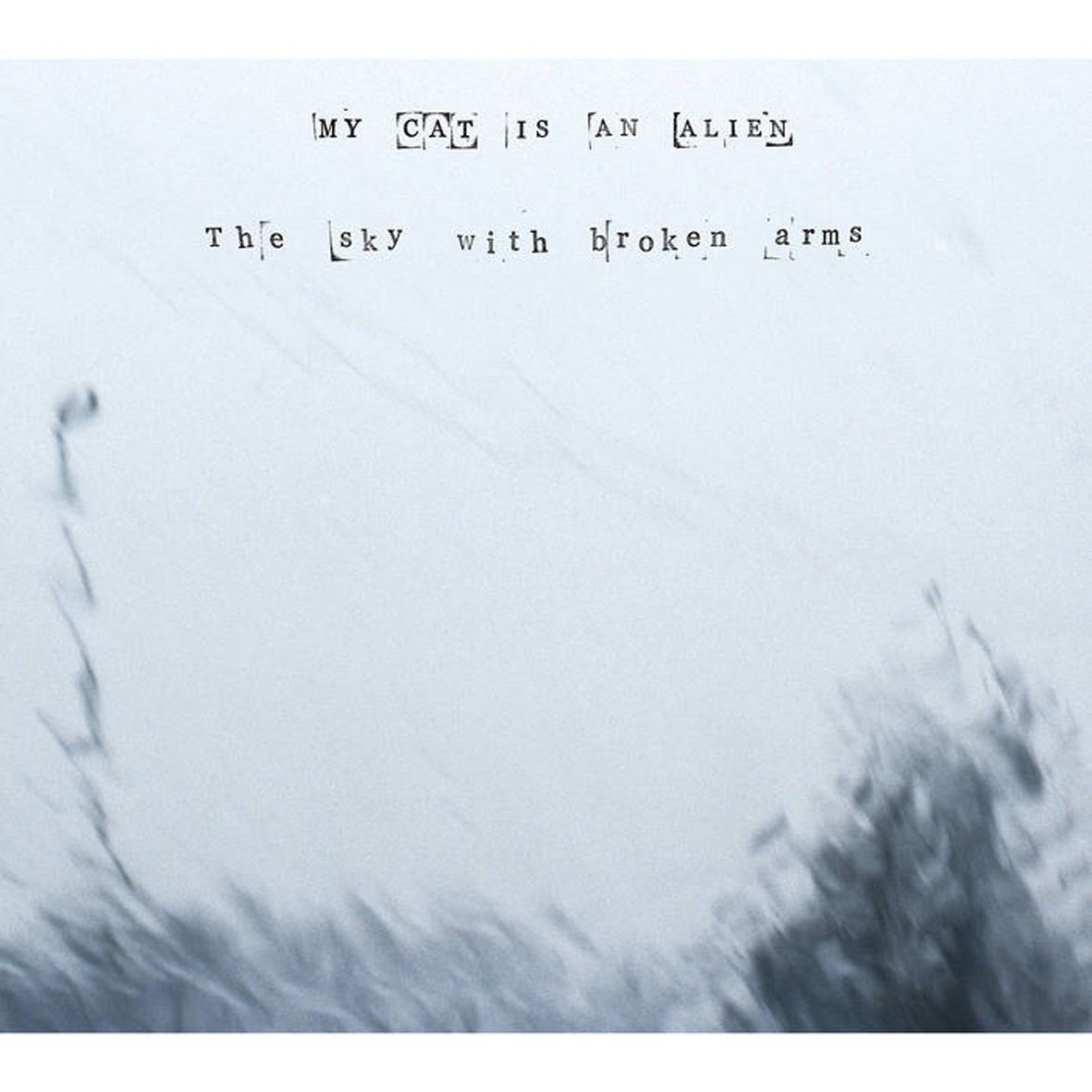 This latest opus from the Opalio brothers continues their restlessly experimental hot streak, taking inspiration from a characteristically bizarre event: two years ago, Roberto discovered that a bunch of his records were corroded by an "inexplicable oxidation process." After some time, he decided to listen to one of them anyway and found himself fascinated by the way the listening experience was transformed by the surface noise. Naturally, the instantaneous composition that resulted from that revelation is considerably more bizarre and idiosyncratic than a mere celebration of crackle and hiss, but the added layer of noise beautifully adds an evocative textural layer to The Sky With Broken Arms' sublime and eerily otherworldly reverie.
This latest opus from the Opalio brothers continues their restlessly experimental hot streak, taking inspiration from a characteristically bizarre event: two years ago, Roberto discovered that a bunch of his records were corroded by an "inexplicable oxidation process." After some time, he decided to listen to one of them anyway and found himself fascinated by the way the listening experience was transformed by the surface noise. Naturally, the instantaneous composition that resulted from that revelation is considerably more bizarre and idiosyncratic than a mere celebration of crackle and hiss, but the added layer of noise beautifully adds an evocative textural layer to The Sky With Broken Arms' sublime and eerily otherworldly reverie.
Every now and then, I come across an album that has uncannily perfect cover art that not only conveys exactly the tone of the album, but seems to exist as an absolutely crucial part of the whole.The Sky With Broken Arms is one such album, as Roberto Opalio's blurred and mysterious photograph of a tree and a streetlight is a window into the similarly blurred and mysterious world that this blearily languorous longform piece inhabits.I should note that "longform" in this case means a mere 36 minutes, so this is actually a comparatively concise and distilled dose of the Opalio's lysergic sorcery, given their recent run of double-, triple-, and sextuple-album epics.Aside from that brevity and the omnipresent crackle and hiss of Roberto's ravaged vinyl, however, this release shares a lot of stylistic common ground with some of the Opalio's more sustained plunges into deep-drone psychedelia.All of the expected elements (the alientronics; the eerily floating, wordless vocals; the surreal loops) are in place as always, yet The Sky With Broken Arms has its own very distinct character, as it paints an extremely vivid picture of a very specific scene (for me, at least).
If this album were a movie, it would be a grainy home video of a sleepy rural town at night: the streets are empty, the one stoplight gently sways in the wind, and the church bell in the center of town hollowly resonates, announcing the time.Something is not quite right, however, as the bell continues to calmly ring again and again long after it has passed any possible earthy hour: time seems to have either frozen, slowed, or gotten stuck in an endlessly looping moment.Also, the bell is not the only sound, as the very air itself seems to have come alive with a crackle that resembles the sparking of a downed power line.And it sounds like a nearby radio has suddenly come to life as well and is now picking up mysterious, swooping transmissions from unknown sources.In fact, it seems like the entire town has been completely enveloped in some kind of unexplained electromagnetic disturbance and I seem to be the only one awake to witness it.Characteristically, things only get stranger from that point, as Broken Arms is essentially just one long, slow descent into escalating weirdness.First, Maurizio’s queasily rippling guitars make it feel like reality is dissolving into a dizzying fever dream.Then, Roberto’s unnervingly spectral vocals start to creep over the piece like a dense, lysergic fog.Or like a sickly green light emanating from a UFO hovering right above the town.Needless to say, there is nothing else on earth quite like this album (or like My Cat is an Alien).Ostensibly, this is music, but that feels like a hopelessly reductive term for the transcendent, reality-disrupting spell that the Opalios cast.This album is roughly as disorienting as unexpectedly waking up in another dimension.Or at the bottom of the sea.
I suppose there are other My Cat is an Alien albums that I like more than this one, but that kind of earthbound thinking truly misses the point of the Opalios' artistry.A new MCIAA album is never just a fresh batch of songs–it is both a legitimate event and an invitation to share the Opalios' hermetic, otherworldly headspace for a brief time.Notably, that headspace is never the same twice, as the Opalios' music is an evolving ritual.It is quite remarkable how the brothers are able endlessly combine and rearrange their unconventional and minimal sound palette into new experiences with their own distinct personalities.Some albums are like a deep trance, some are like an extradimensional nightmare, some are like a plunge into the subconscious, and some make me feel like I am losing my goddamn grip on sanity.This one is a bit different, as it feels like living inside an especially haunting and surreal episode of The Twilight Zone.On one level, it is a bit less "alien" than some of the duo’s more expansive releases, but the few recognizable touches from our physical world arguably make it one of the Opalios' more unnerving and striking releases to date, as the border separating reality from the Opalios' darkly lysergic vision now feels ominously porous.
 
Read More
- Administrator
- Albums and Singles
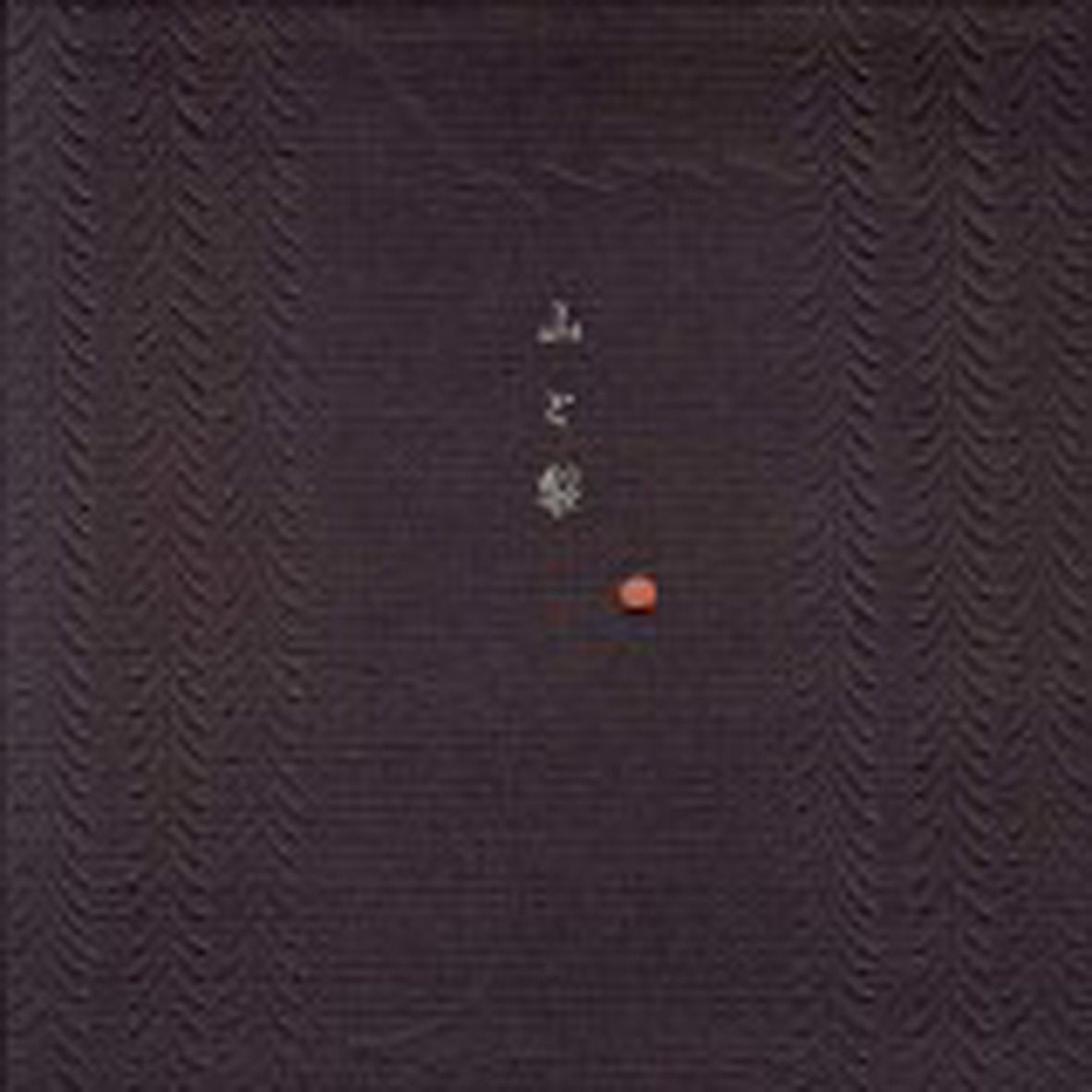 The work of Andrew Chalk and Daisuke Suzuki seems as if it has been intertwined forever, so I was somewhat startled to discover that this is their first new collaborative release in almost a decade. As befits the re-convergence of these two masters of understated tranquility, Yama to Nashi feels like a relaxed and unhurried reunion of old friends rather than a bold new vision. As such, it is a somewhat minor (if lovely) addition to the Siren/Faraway Press oeuvre that mostly lingers in familiar territory, but there are a couple of divergent gems lurking amidst these new pieces that longtime fans will not want to miss.
The work of Andrew Chalk and Daisuke Suzuki seems as if it has been intertwined forever, so I was somewhat startled to discover that this is their first new collaborative release in almost a decade. As befits the re-convergence of these two masters of understated tranquility, Yama to Nashi feels like a relaxed and unhurried reunion of old friends rather than a bold new vision. As such, it is a somewhat minor (if lovely) addition to the Siren/Faraway Press oeuvre that mostly lingers in familiar territory, but there are a couple of divergent gems lurking amidst these new pieces that longtime fans will not want to miss.
For the most part, the languorous and glistening opening piece ("Threads From The Milky Way") sets the tone for the entire album, establishing the overarching aesthetic of sketchlike vignettes of dreamlike, liquescent bliss.It is difficult to tell exactly how Chalk and Suzuki are getting their blurred and slippery tones, but I believe there is a processed electric piano at the heart of these recordings.As the album unfolds, however, Chalk and Suzuki start to drift further and further away from their lazily glimmering and rippling sound pools and both the mood and the palette start to deepen (and darken).The first real shadows start to fall across Yama on the third piece, "Suzume," which casts a mournful spell by weaving discordant harmonies from glacially swelling strings and drifting smears of synth tones.Curiously, that veil of sadness dispels almost as suddenly and unexpectedly as it appeared, as the wonderful "Shelf on Wall" shakes off its initial moody reverie to blossom into a surreal field recording of a Japanese parade.From there, the piece continues to be a pleasantly inventive and evocative surprise, as the parade seems to partially fade away, but leaves a lovely and lyrical flute melody in its wake that dreamily drifts through a woozy fog of gentle arpeggios, crashing waves, and a few lingering tendrils of the raucous festivities (marching men, clattering percussion, children's voices).To my ears, it is the album's true centerpiece (conveniently located in the center of the album, no less), but it is not without strong competition from the album's final stretch.
Although it is considerably shorter, I am also quite fond of "A Sentry on The Roof," which augments its blearily impressionistic cascades of watery electric piano tones with the loud and fitful buzzing of a large bee.That bee makes a surprising amount of difference, which highlights an unusual trend the runs throughout Yama to Nashi: the purely instrumental pieces feel like the soundtrack to a gorgeous sunrise or seaside vista that I am not seeing, while the pieces that prominently feature field recording are considerably more effective at drawing me into the scene.I am a bit curious about why Chalk and Suzuki did not pursue that elegant blurring together of swooning, hazy ambiance and crisp, vibrant textures from the natural world more, as it definitely feels like that synthesis elevates this collaboration into something more transcendent and unique when it happens.If I had to guess, however, I suspect that the reason is that most of Yama to Nashi consists of Chalk and Suzuki's stronger improvisations that occurred on the road to composing the album's epic closing title piece.On one hand, "Yama To Nashi" is not radically different from the rest of the album, as it is built from gently tumbling arpeggios and warmly radiant washes of synthesizer (though there are some buried bird noises hiding in the mix).There is, however, an unexpectedly strong motif resembling a shuddering, digitalized bird call that periodically tears through the placid idyll.That certainly livens thing up, though it is not quite as dramatic as it sounds.The real difference is mostly just time: Chalk and Suzuki allow "Yama to Nashi" to languorously stretch out for over 20 minutes and that suits it beautifully.Duration makes a world of difference with music in this vein: a glimpse of heaven is nice, but getting a chance to linger in it is by far a superior experience.
As is true of most Andrew Chalk albums (both with and without Suzuki) there is very little to grumble about with this album: Chalk and Suzuki have a long history of making lovely and lush music together and Yama to Nashi ends a long hiatus to bring the world more of it.That pleases me.I am, however, the hapless victim of my own high expectations, as I hoped this welcome reunion would result in an enduring classic.Yama is not an enduring classic, though "Shelf on Wall" seems like a strong step towards a more ambitious and immersive future opus.Hopefully it will not take another decade for that to happen, but I am sure I can find some way to keep busy while I wait if it does.In the meantime, Yama to Nashi is a solid to return to form that adds one more quietly beautiful longform work to the Chalk/Suzuki canon.
Samples:
 
Read More
